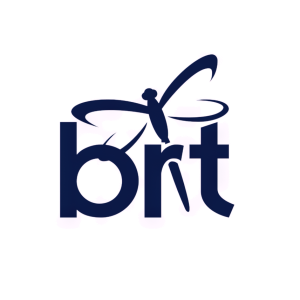BioRestorative Therapies Announces Filing of 2023 Annual Report on Form 10-K
MELVILLE, N.Y., April 01, 2024 (GLOBE NEWSWIRE) -- BioRestorative Therapies, Inc. (“BioRestorative”, “BRTX” or the “Company”) (NASDAQ:BRTX), a clinical stage company focused on stem cell-based therapies, announced today the filing of its Form 10-K annual report with the Securities and Exchange Commission ("SEC") for the year ended December 31, 2023.
The annual report can be accessed on the SEC's website at www.sec.gov, and on the Company's website at www.biorestorative.com under "SEC Filing" in the Investors and Media section.
2023 and Recent Pipeline Developments
BioRestorative’s two primary platform technologies include: its lead clinical-stage cell therapy candidate, BRTX-100, which consists of 40 million autologous bone marrow-derived, hypoxic-cultured transitional stem cells combined with an autologous platelet lysate, and is engineered to be injected into targeted areas of the body that have little blood flow; and ThermoStem®, a preclinical program that aims to use allogeneic brown adipose-derived, or brown fat, stem cells to address major metabolic diseases such as obesity and Type 2 diabetes.
BRTX-100
The safety and efficacy of BRTX-100 in treating chronic lumbar disc disease (“cLDD”) is being evaluated in a Phase 2, prospective, randomized, double-blinded and controlled study. A total of up to 99 eligible subjects will be enrolled at up to 16 clinical sites in the United States. Subjects included in the trial are being randomized 2:1 to receive either BRTX-100 or placebo.
While previous clinical studies have demonstrated that the harsh microenvironment of the disc could impact stem cell dose viability and result in a non-efficacious or the worsening of clinical outcomes, BRTX-100 has been designed to potentially overcome this challenge by culturing and expanding these highly potent cells under hypoxic conditions to mimic and condition them to the unforgiving, low oxygen environment of the disc in order to maximize cell survivability.
In June 2023, BioRestorative announced that the independent Data Safety Monitoring Board, which is overseeing the ongoing Phase 2 clinical trial of BRTX-100 in cLDD, unanimously recommended the continuation of the study in accordance with the current version of the protocol with no changes. There were no dose limiting toxicities (DLTs) observed in the patients within the initial safety run-in segment of the study.
In early February 2024, a poster describing positive preliminary 26 and 52 week blinded data from the Phase 2 study was presented for the first time at the Orthopaedic Research Society (ORS) 2024 Annual Meeting.
“Although the data presented is still blinded and at an early stage, we were strongly encouraged that the Visual Analog Scale, Oswestry Disability Index, Roland Morris Disability Questionnaire, and Functional Rating Index collected at 26 and 52 weeks after injection indicated a positive trend compared to the baseline,” said Lance Alstodt, Chief Executive Officer of BioRestorative. “We are looking forward to providing further updates as the ongoing Phase 2 BRTX-100 program progresses.”
ThermoStem®
BioRestorative received four notices of allowance (“NOA”s) related to its ThermoStem® program in 2023. The first three NOAs, issued by the European Patent Office in February, the United States Patent and Trademark Office (“USPTO”) in March, and the Japanese Patent and Trademark Office in May, granted claims covering implantable three-dimensional scaffolds and brown adipocytes that have been derived from human brown adipose (fat)-derived stem cells. The fourth NOA, which was issued in December by the USPTO, covered methods of using differentiated human brown fat adipocytes as a platform to screen and identify compounds that can activate and regulate metabolic activity.
“We believe receipt of these four NOAs in rapid succession serves as a testament to the exciting potential of our novel ThermoStem® brown fat stem cell technology platform to deliver a superior efficacy and tolerability profile over current small molecule receptor agonist treatments for obesity and other major metabolic diseases. And while all of the NOAs provide us with further protection in key markets and enhance our ability to engage with potential collaborators and partners, the most recent NOA from the USPTO also represents the achievement of an important milestone as it covers tools that can be used to screen large libraries of compounds targeting metabolic disorders,” commented Mr. Alstodt.
Financial Results
For the year ended December 31, 2023, the Company had a net loss of approximately
At December 31, 2023, BioRestorative had cash, cash equivalents and investments in marketable securities of
About BioRestorative Therapies, Inc.
BioRestorative Therapies, Inc. (www.biorestorative.com) develops therapeutic products using cell and tissue protocols, primarily involving adult stem cells. Our two core programs, as described below, relate to the treatment of disc/spine disease and metabolic disorders:
• Disc/Spine Program (brtxDISC™): Our lead cell therapy candidate, BRTX-100, is a product formulated from autologous (or a person’s own) cultured mesenchymal stem cells collected from the patient’s bone marrow. We intend that the product will be used for the non-surgical treatment of painful lumbosacral disc disorders or as a complementary therapeutic to a surgical procedure. The BRTX-100 production process utilizes proprietary technology and involves collecting a patient’s bone marrow, isolating and culturing stem cells from the bone marrow and cryopreserving the cells. In an outpatient procedure, BRTX-100 is to be injected by a physician into the patient’s damaged disc. The treatment is intended for patients whose pain has not been alleviated by non-invasive procedures and who potentially face the prospect of surgery. We have commenced a Phase 2 clinical trial using BRTX-100 to treat chronic lower back pain arising from degenerative disc disease.
• Metabolic Program (ThermoStem®): We are developing a cell-based therapy candidate to target obesity and metabolic disorders using brown adipose (fat) derived stem cells to generate brown adipose tissue (“BAT”). BAT is intended to mimic naturally occurring brown adipose depots that regulate metabolic homeostasis in humans. Initial preclinical research indicates that increased amounts of brown fat in animals may be responsible for additional caloric burning as well as reduced glucose and lipid levels. Researchers have found that people with higher levels of brown fat may have a reduced risk for obesity and diabetes.
Forward-Looking Statements
This press release contains "forward-looking statements" within the meaning of Section 27A of the Securities Act of 1933, as amended, and Section 21E of the Securities Exchange Act of 1934, as amended, and such forward-looking statements are made pursuant to the safe harbor provisions of the Private Securities Litigation Reform Act of 1995. You are cautioned that such statements are subject to a multitude of risks and uncertainties that could cause future circumstances, events or results to differ materially from those projected in the forward-looking statements as a result of various factors and other risks, including, without limitation, those set forth in the Company's latest Form 10-K filed with the Securities and Exchange Commission. You should consider these factors in evaluating the forward-looking statements included herein, and not place undue reliance on such statements. The forward-looking statements in this release are made as of the date hereof and the Company undertakes no obligation to update such statements.
CONTACT:
Email: ir@biorestorative.com







